Best
for Beginners
CCO-100 & Colored Cello HIGHLY RECOMMENDED
-
Overall: Padded lightweight carrying soft case
-
Best Feature: Brazilwood bow unbleached horsehair
-
TedScore™: 9/10
Best
Cello Pick
SC-165a VERSATILE INSTRUMENT
-
Overall: Hand-carved from spruce and maple wood
-
Best Feature: Ebony fingerboard
-
TedScore™: 9/10
Best
Affordable Cello
4/4 Size Cello BEST CELLOS
-
Overall: Music stand and cello stand included
-
Best Feature: Comes with a free padded carrying case
-
TedScore™: 8/10
Dive right into exploring the four notes of the cello – C, G, D, and A. Each note unveils a world of its own, waiting for curious listeners to journey through. Picture C as a gentle giant, offering a strong foundation with its deep voice. G comes next, rolling in like waves, a bit brighter and more buoyant. D follows, almost like the friendly chatter of a bird in the morning, welcoming and warm. Finally, A rings out clear and high, like a bell that captures your attention. Discovering these notes feels like unwrapping a secret gift, each one holding its own story. If you fancy unravelling these melodic tales and becoming that much closer to mastering the cello, let this be your compass.
Each string has a unique note; you can create different pitches by pressing down on the strings with your fingers.
Don’t worry if it seems like a lot to take in at first. You’ll soon be playing beautiful melodies and harmonies with practice and patience like a pro!
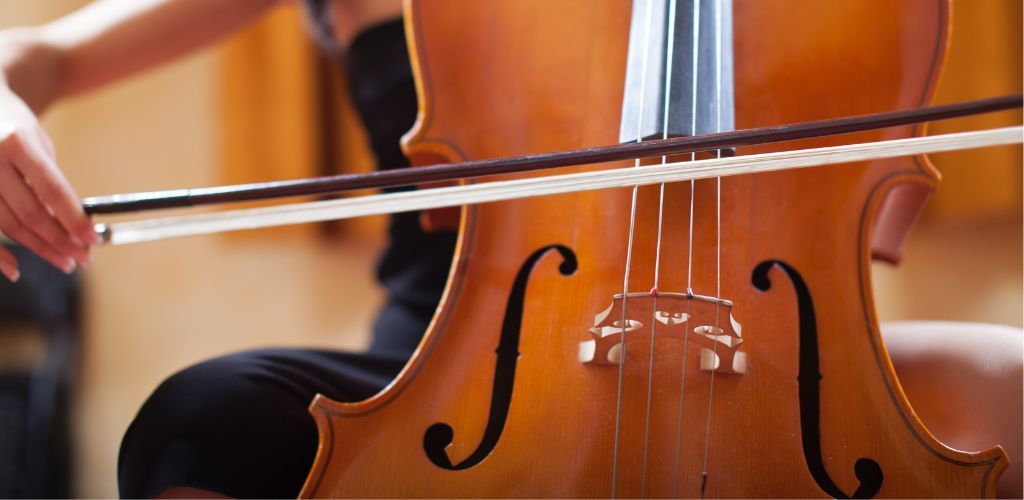
Learning the finger placement and patterns used when playing cello music passages is also important. This will help you play more accurately and with better intonation.
So, grab your cello and let’s get started on your musical journey with one of the most beautiful stringed instruments!
Understanding Cello String Notes

If you’re new to playing the cello, understanding the cello string notes is an essential first step. The cello has four strings: A, D, G, and C, in ascending order of thickness.
Did you knowThe low C on the cello corresponds to two octaves below middle C on the piano, and many students use a piano to tune their cellos.
The four tuning pegs located on the scroll and the four fine tuners located on the tailpiece of the cello are used to tighten and loosen the corresponding strings.
The easiest way to remember the cello string notes is to remember the order of the strings from highest to lowest pitch. The A string is the highest, followed by the D string, then the G string, and finally, the C string.
It’s important to note that the cello strings are named after the pitch they produce when played open. The open A string produces an A note, the open D string produces a D note, the open G string produces a G note, and the open C string produces a C note.
When reading sheet music for the cello, the notes are written on a staff, with each line and space representing a different pitch.
The top line of the staff represents the A string, the middle line represents the D string, and the bottom line represents the G string. Two ledger lines below the staff represent the C string.
Place your fingers on the fingerboard to play the cello string notes. Each finger placement produces a different pitch, with the first finger producing a half-step higher than the open string, the second finger producing a whole step higher, and so on.
Fingering and Positions on Cello
When learning to play the cello, it’s essential to understand the different finger positions and fingering techniques. Here are the different positions and techniques you need to know:
First Position
The first position is the most common position on the cello. In this position, the fingers are placed on the fingerboard to create different notes.
A cello fingering chart can be a helpful tool for beginners to learn the correct finger placement. In the first position, each finger corresponds to a specific note, and each note is a half step apart from the previous one.
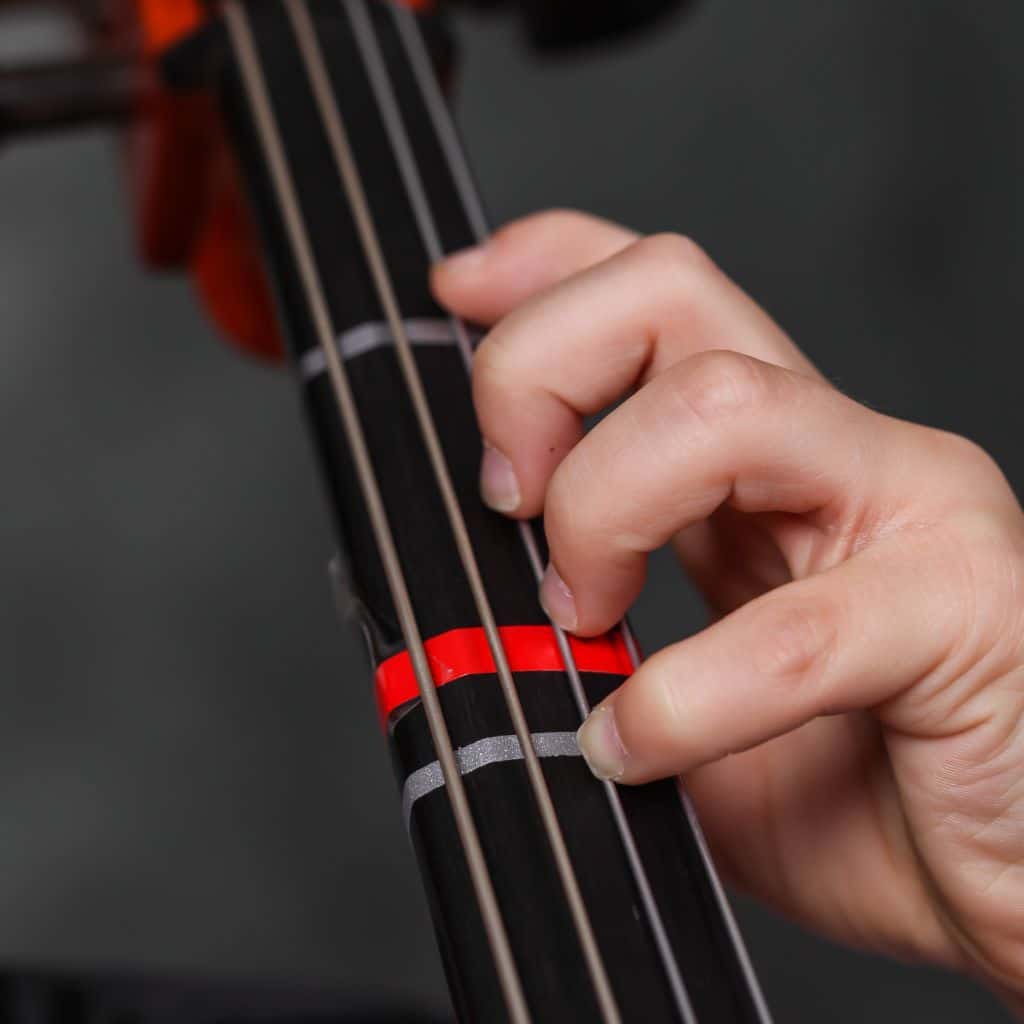
Thumb Position
The thumb position is a technique cellists use to reach higher notes on the fingerboard.
The thumb is used as a fret and create the desired notes in this position. It’s essential to master this technique to play advanced pieces.

Half and Whole Steps
Half and whole steps refer to the distance between two notes on the cello fingerboard.
A half step is the distance between two adjacent notes, while a whole step is the distance between two notes that have one note in between them.
Understanding these distances is crucial to play the correct pitch and creating smooth transitions between notes.
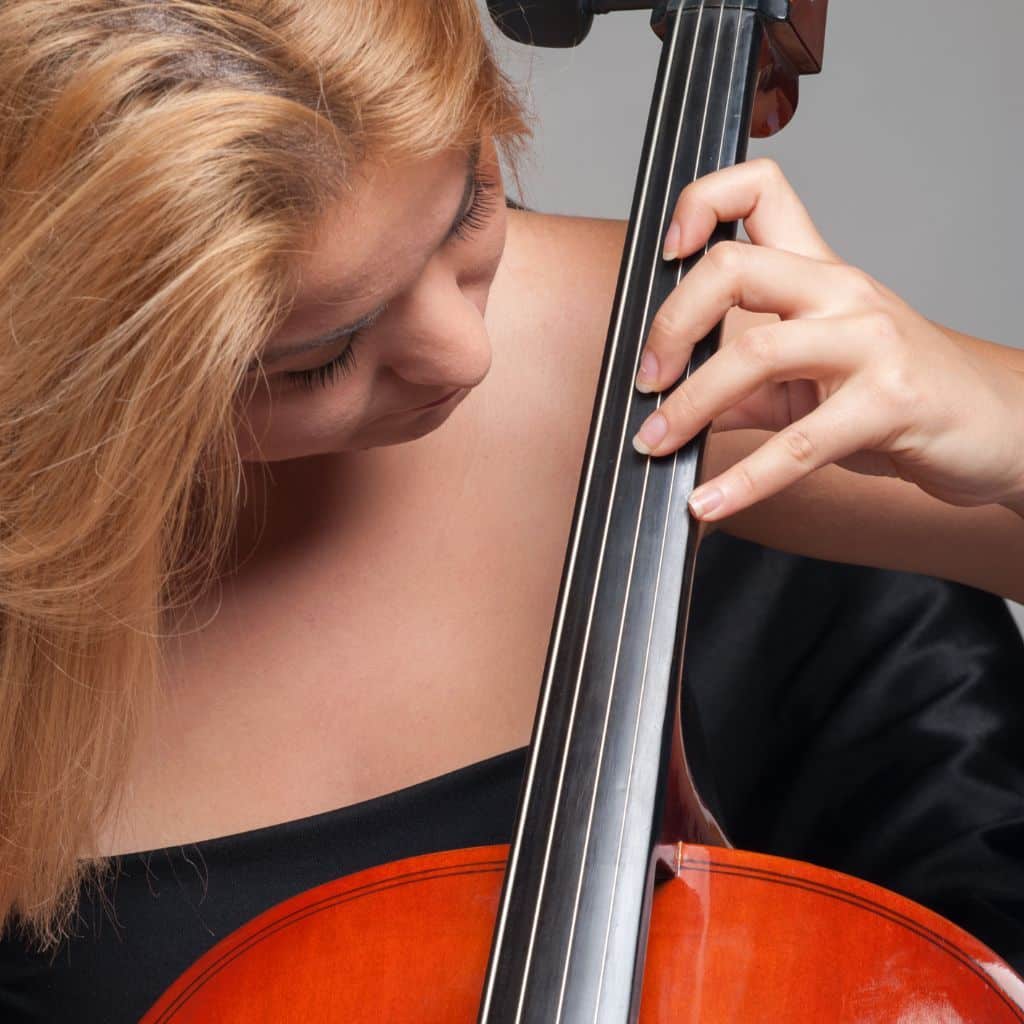
Fourth Position
The fourth position is higher on the cello fingerboard that plays higher notes.
In this position, the hand is shifted up the fingerboard, and the fingers are placed in a new position. It’s essential to practice shifting between positions to play advanced pieces.
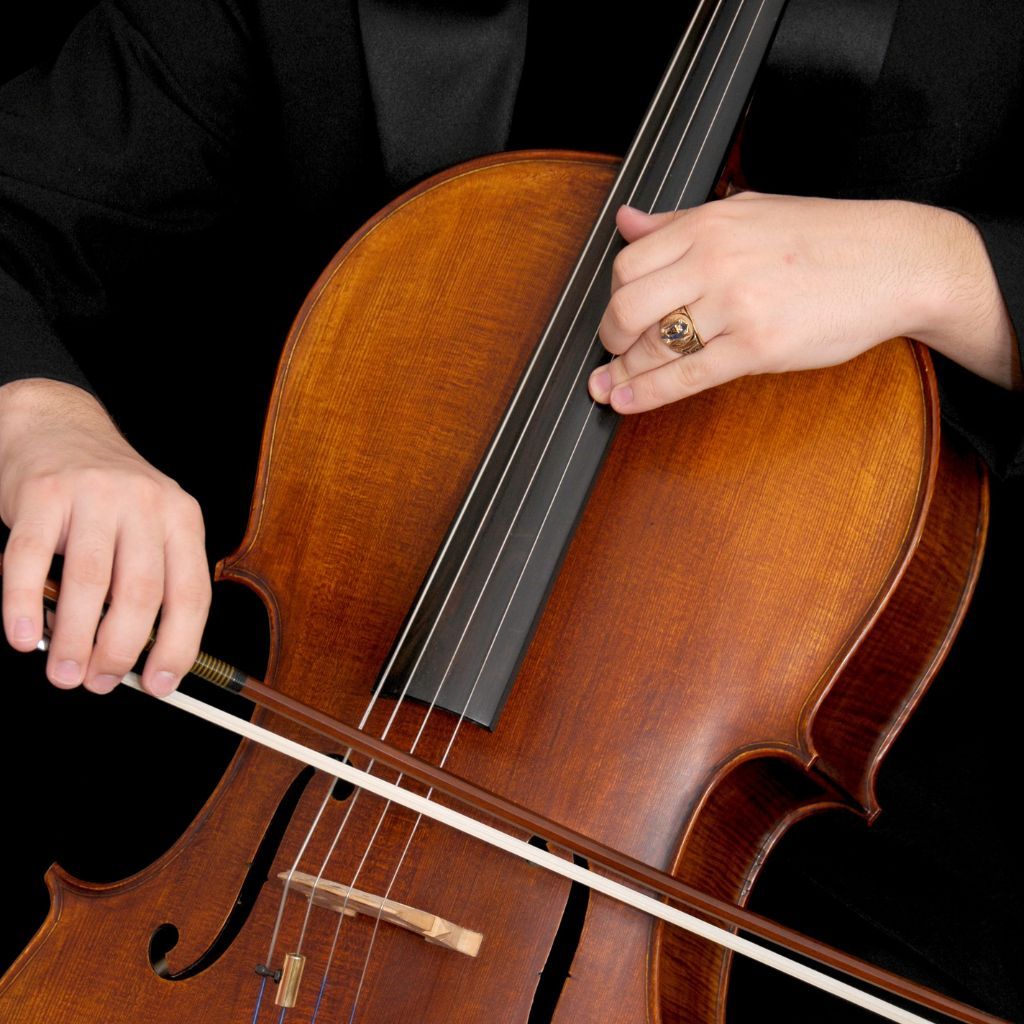
Understanding the Basics: Reading Cello Sheet Music
Sheet music for cello is written in bass clef, meaning the notes are arranged differently than in treble clef.
Firstly, if you haven’t read our dedicated article on reading Cello Sheet Music – please do that!
The notes in the bass clef range from C2 (two octaves below middle C) to A4 (one octave above middle C). It’s important to be familiar with the notes on the cello fingerboard to identify them on the sheet music quickly.
The notes on the cello staff are represented by the letters A, B, C, D, E, F, and G. Each note corresponds to a specific pitch on the cello.
The notes are arranged on the staff with the lower notes at the bottom and the higher notes at the top.
To help you remember the notes, you can use flashcards or a mnemonic device, such as “All Cows Eat Grass”, to remember the notes on the lines of the staff.
Understanding Chromatic Notes

In addition to the standard notes, cello sheet music may also include chromatic notes. These are notes that are not part of the diatonic scale and are represented by symbols such as sharps (#) and flats (b).
Chromatic notes can be challenging to read, so it’s essential to take your time and practice them slowly until you become comfortable with them.
Using Sheet Music Resources
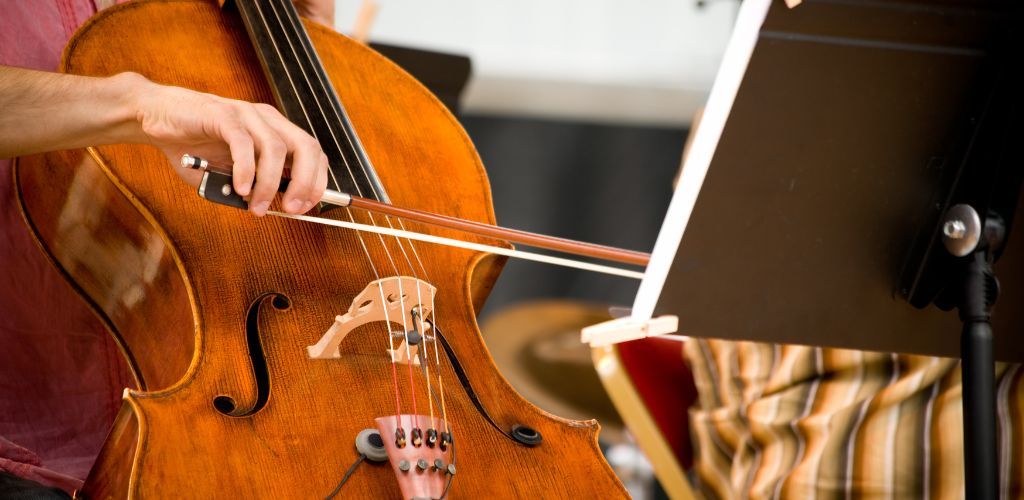
Many resources are available to help you learn how to read cello sheet music, including online tutorials, sheet music books, and flashcards.
You can also use sheet music software like MuseScore to create and edit your own sheet music. When first starting, it’s a good idea to practice with simple sheet music and gradually work your way up to more complex pieces.
How to Tune Your Cello
Learning to tune your cello is an essential skill for any cellist. Proper tuning ensures that your instrument sounds its best and allows you to play in tune with others.
This section will walk you through the step-by-step process of cello tuning.

You can use a fine tuner for each string (usually attached to the tailpiece), a tuning peg winder, or a reliable tuning device or app.
Pluck the A string and compare its pitch to the desired A note. If the string is flat (lower in pitch), turn the fine tuner clockwise to tighten it. If the string is sharp (higher in pitch), turn the fine tuner counterclockwise to loosen it.
Listen carefully to the pitch while playing the A string and compare it to the next string. Adjust the tension of the adjacent string’s fine tuner to match the pitch. Repeat this process for the rest of the strings, ensuring each matches its ideal note.
Once all the strings are individually tuned, play open strings in harmony. Listen for any discrepancies in pitch and make additional adjustments if needed.
If the fine tuners don’t provide enough adjustment range, you may need to use the tuning pegs. Use caution when turning the pegs, as small adjustments can greatly affect the pitch. Turn the pegs slowly and in small increments, checking the pitch frequently.
Our Recommended Cellos
Cecilio CCO-100 & Colored Cello
Cecilio CCO-100 & Colored Cello
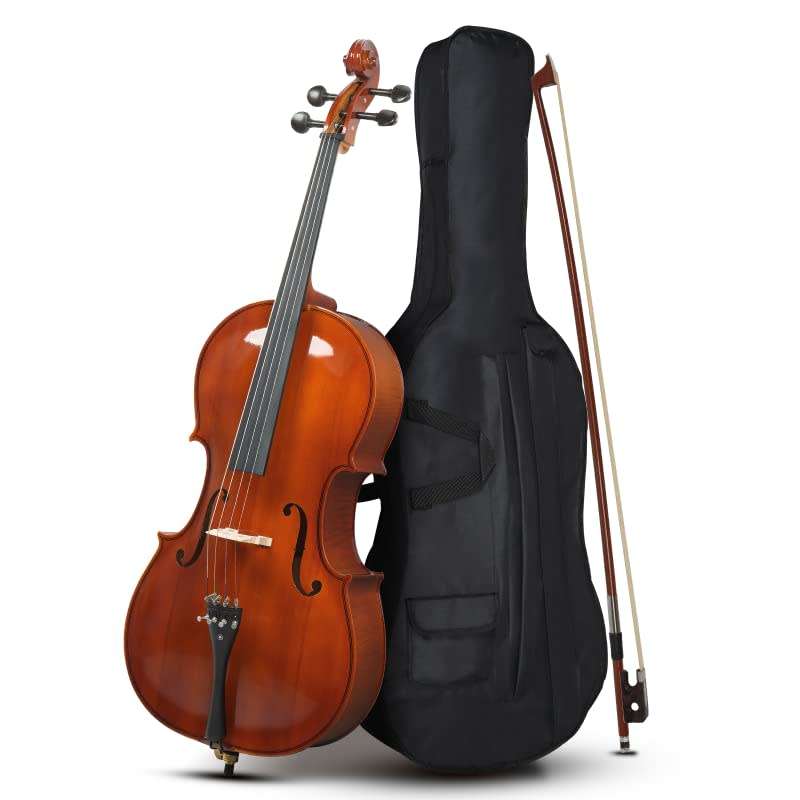
FEATURES: With a padded lightweight carrying soft case
OTHER INFO: Brazilwood bow with unbleached horsehair
- Include pockets and adjustable backpack straps
- Excellent for the price
- Elegant design
- With an extra set of cello strings
- None
When you click ‘Check Price’, you’ll see there are loads of great places to buy this item. Our personal favorite is Sweetwater for the US, and Thomann and Gear4Music for the UK & Europe.
They are the largest music retailers, with excellent customer service, competitive prices, really fast shipping, and the longest guarantees.
The professional musician who wrote this article combined many things,
from the product build, manufacturer’s reputation through to feedback
from other users, to create our famous TedScore™.
Cremona SC-165a
Cremona SC-165a
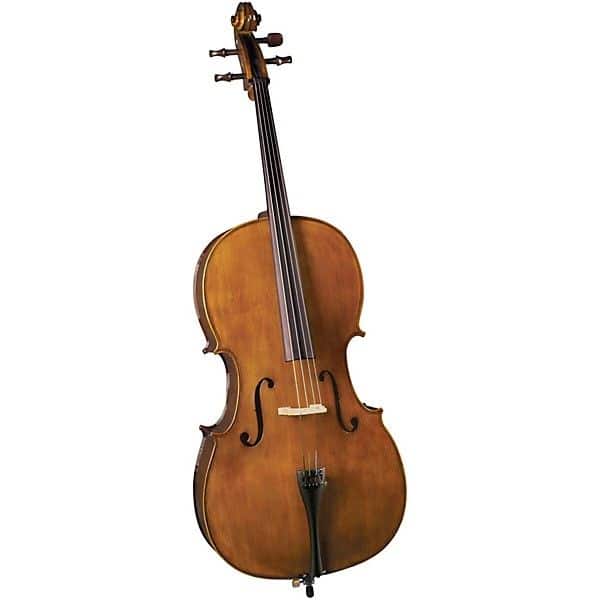
FEATURES: Hand-carved from spruce and maple wood
OTHER INFO: Ebony fingerboard
- Swiss-style pegs
- Balanced bow for easy playing
- Quality wood construction
- Lightweight composite tailpiece
- None
When you click ‘Check Price’, you’ll see there are loads of great places to buy this item. Our personal favorite is Sweetwater for the US, and Thomann and Gear4Music for the UK & Europe.
They are the largest music retailers, with excellent customer service, competitive prices, really fast shipping, and the longest guarantees.
The professional musician who wrote this article combined many things,
from the product build, manufacturer’s reputation through to feedback
from other users, to create our famous TedScore™.
Merano 4/4 Size Cello
Merano 4/4 Size Cello
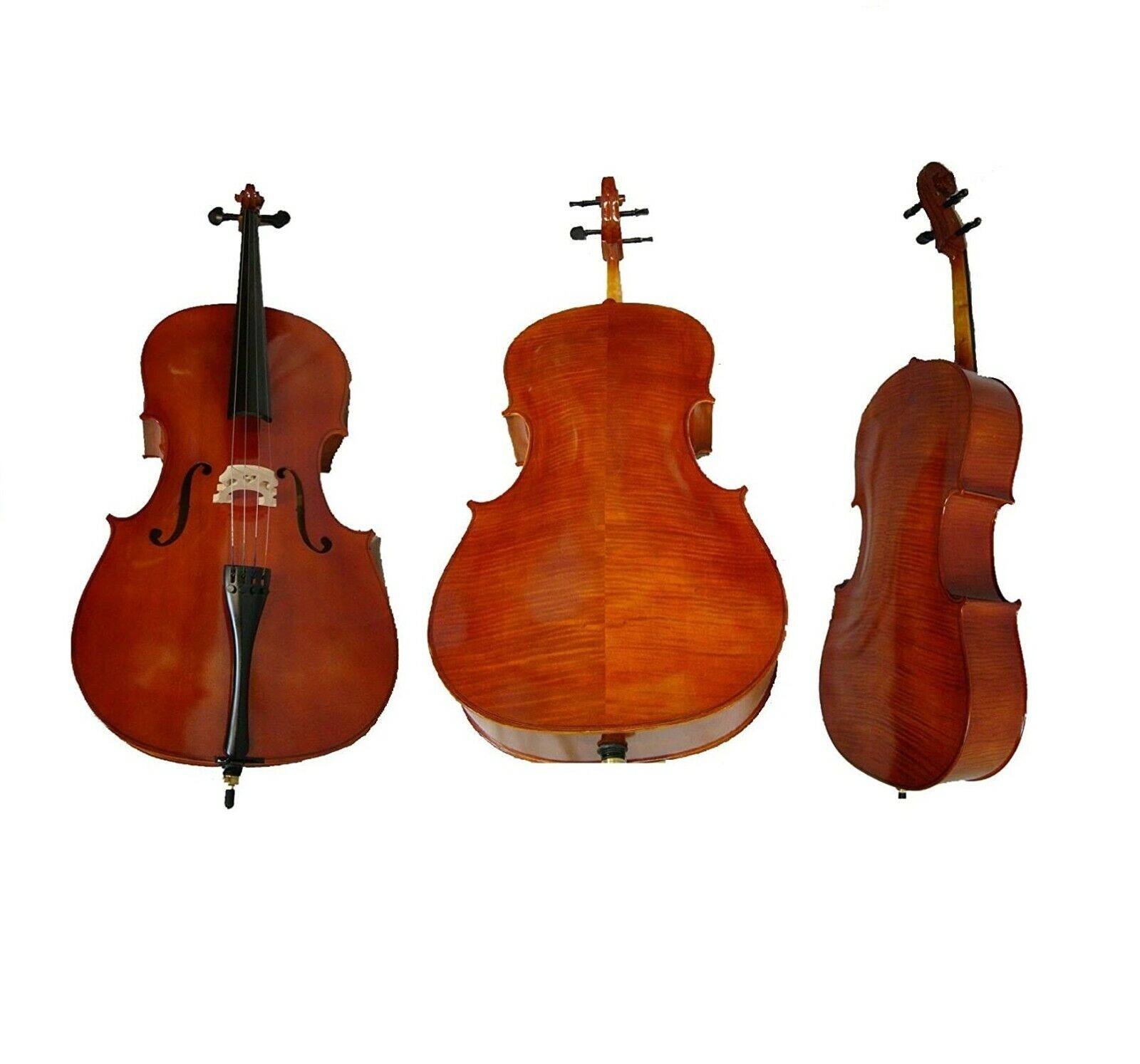
FEATURES: Music stand and cello stand included
OTHER INFO: Comes with a free padded carrying case
- Two sets of extra strings
- Quality bow
- High-quality cello construction
- Complete accessories
- None!
When you click ‘Check Price’, you’ll see there are loads of great places to buy this item. Our personal favorite is Sweetwater for the US, and Thomann and Gear4Music for the UK & Europe.
They are the largest music retailers, with excellent customer service, competitive prices, really fast shipping, and the longest guarantees.
The professional musician who wrote this article combined many things,
from the product build, manufacturer’s reputation through to feedback
from other users, to create our famous TedScore™.
Cello String Notes:
Mastering the Basics for Beginners
Summary
Understanding the notes on the cello strings is essential to learning to play this beautiful instrument.
By mastering finger placement and patterns and practising regularly, you can create beautiful melodies and harmonies that captivate your audience.
So, keep on playing and exploring the world of cello music, and who knows, you might discover your inner cellist!
Wait, there’s more!!!
Are you in the market for a new cello? Well, you’re in luck!
Our comprehensive Cello Buyer’s Guide has covered everything you need to know to make an informed decision and find the perfect cello that suits your needs and budget.
FAQ's
Cellos typically tune to the note A, specifically the A string, which is usually tuned to 440 Hz.
A 5-string cello is typically tuned like a traditional 4-string cello but with an additional low C string below the G string. The tuning of the C string can vary depending on the player’s preference and the specific string instrument.




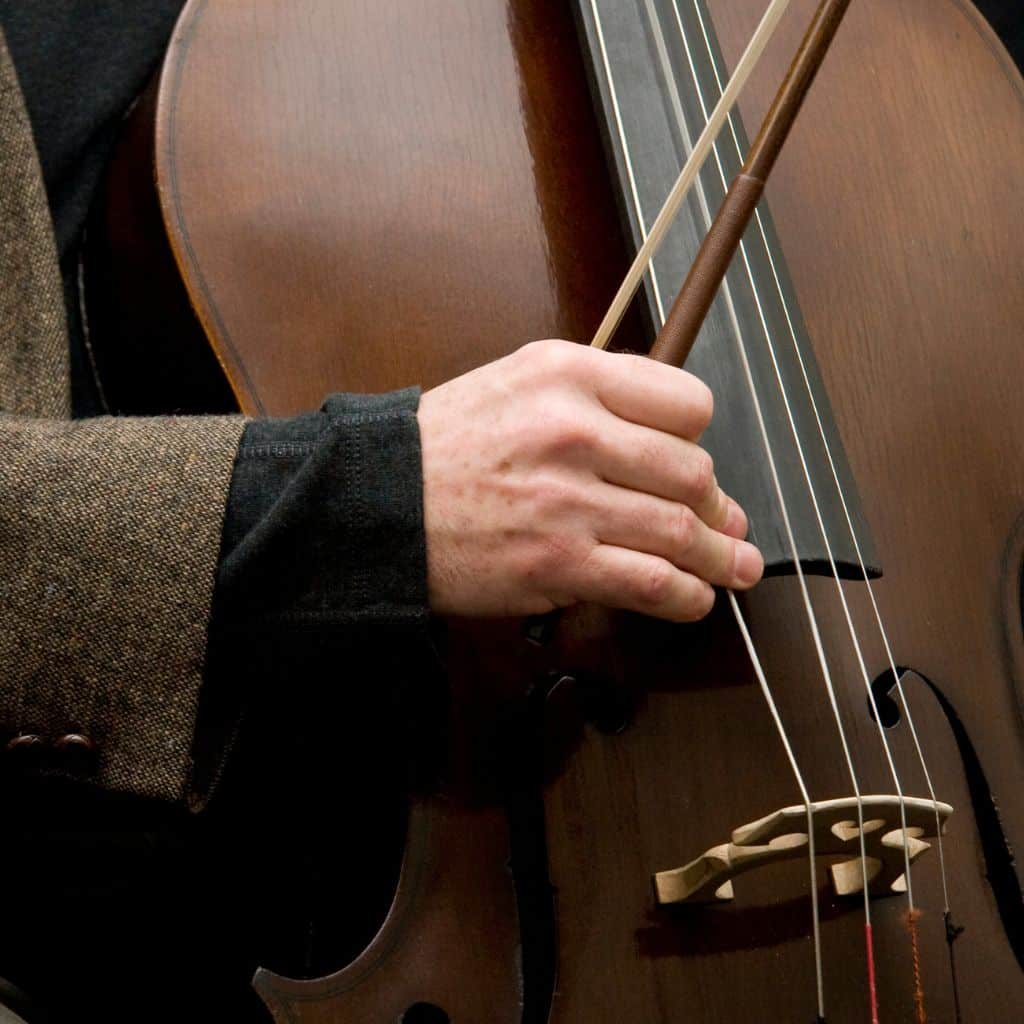
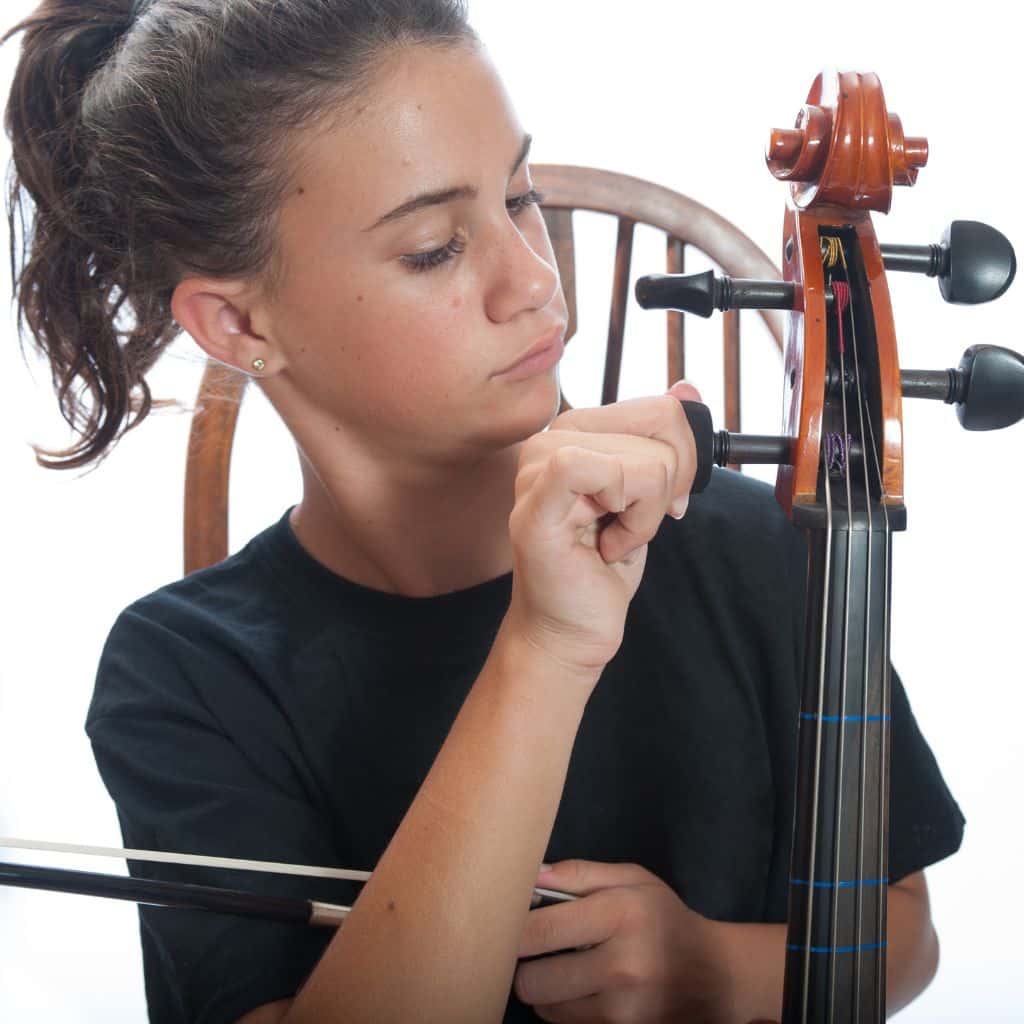











I found the section on cello string notes quite foundational, yet I believe the article could greatly benefit from more advanced techniques and a deeper dive into cello repertoire. Furthermore, while the recommended cellos list provides a good starting point for beginners, an analysis on the nuances between different manufacturers could guide seasoned players in making more informed decisions. Does anyone have insights on how the sound quality differs between these brands?
stringsAttached, your points are well made. In my experience, the Cecilio models tend to have a brighter tone, but lack the depth and richness found in higher-end Cremona models.
i used to play violin but switching to cello now. feels like a totally different beast. everyone talks about how deep and resonant it sounds, hoping to get there myself someday. this guide seems like a good start, thanks!
hey, does anyone know how hard it is to learn thumb position? seems kinda scary ngl
Really appreciate the section on tuning your cello, Carina Drury. I always struggle with getting it just right. Got any more tips?
Or just play it loud enough to drown out any wrong notes, works for me haha.
AlexZ, using a digital tuner could help! Also, make sure your room is quiet when you tune.